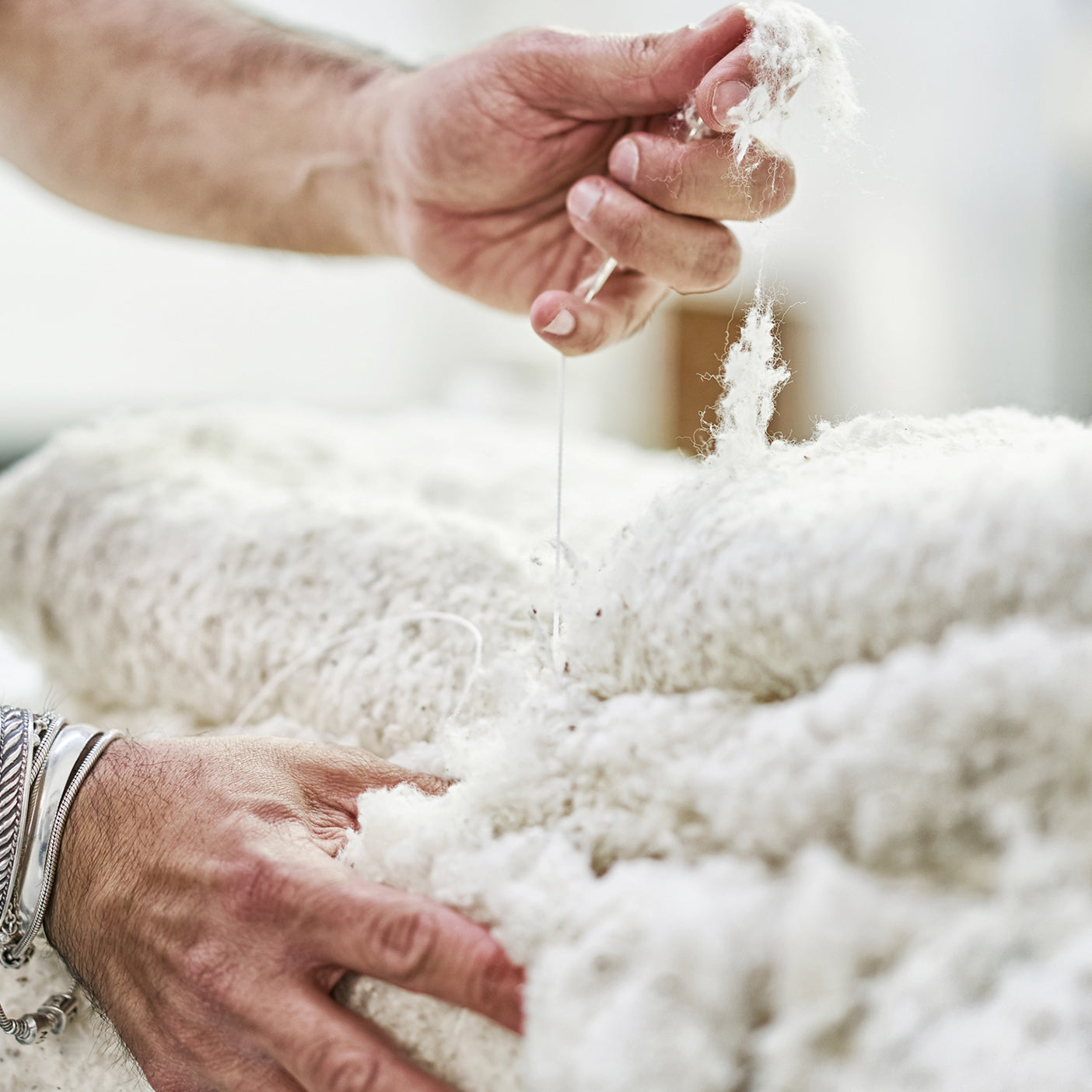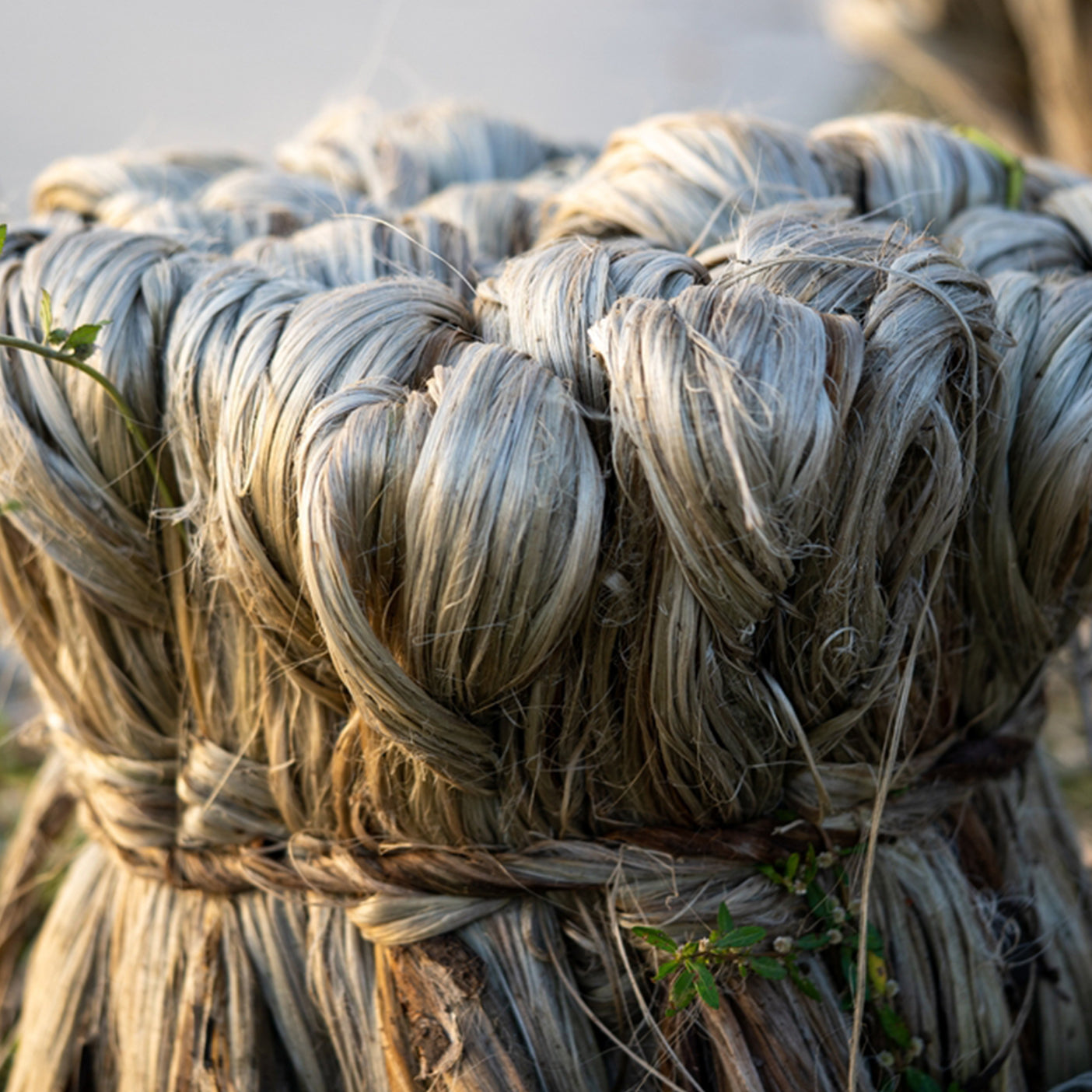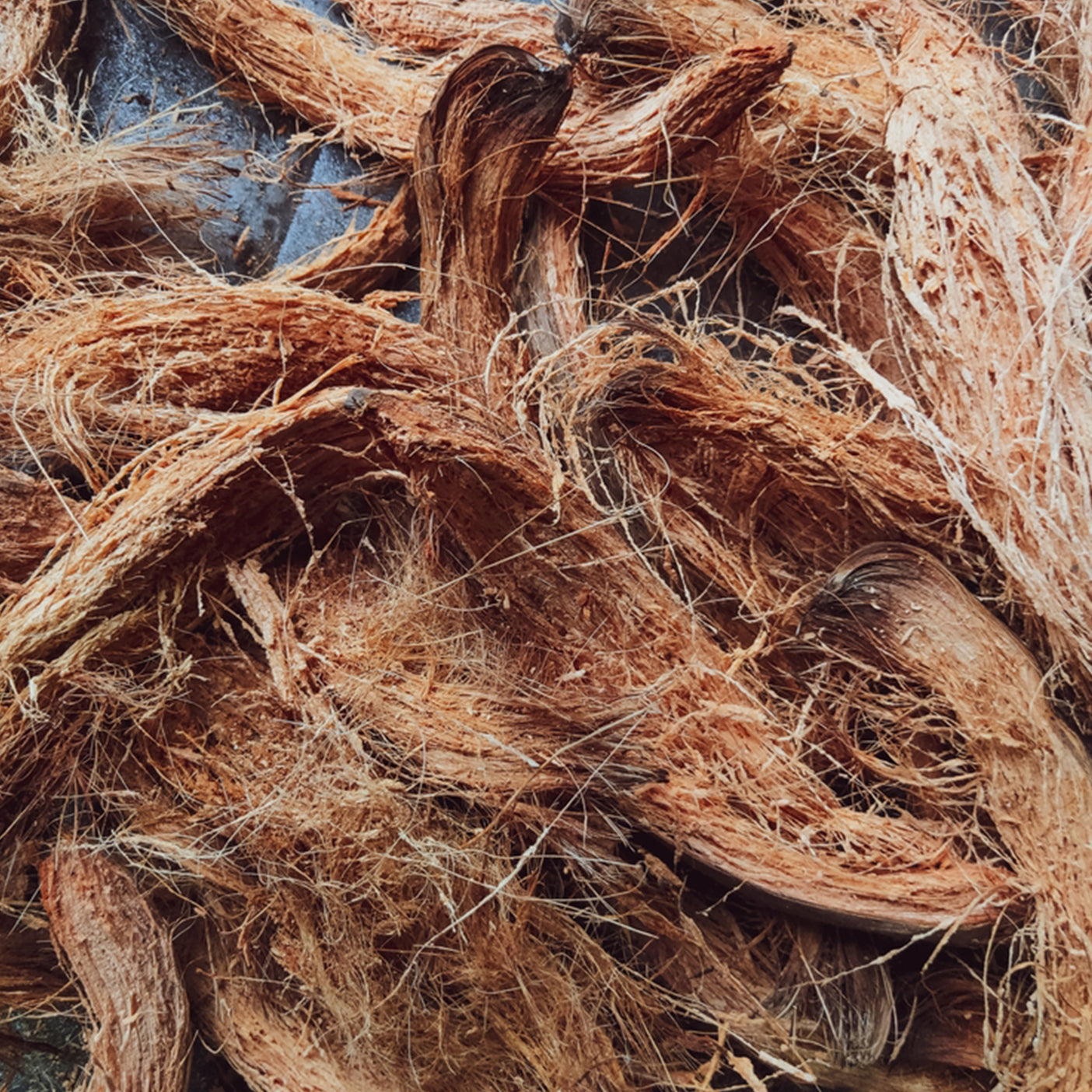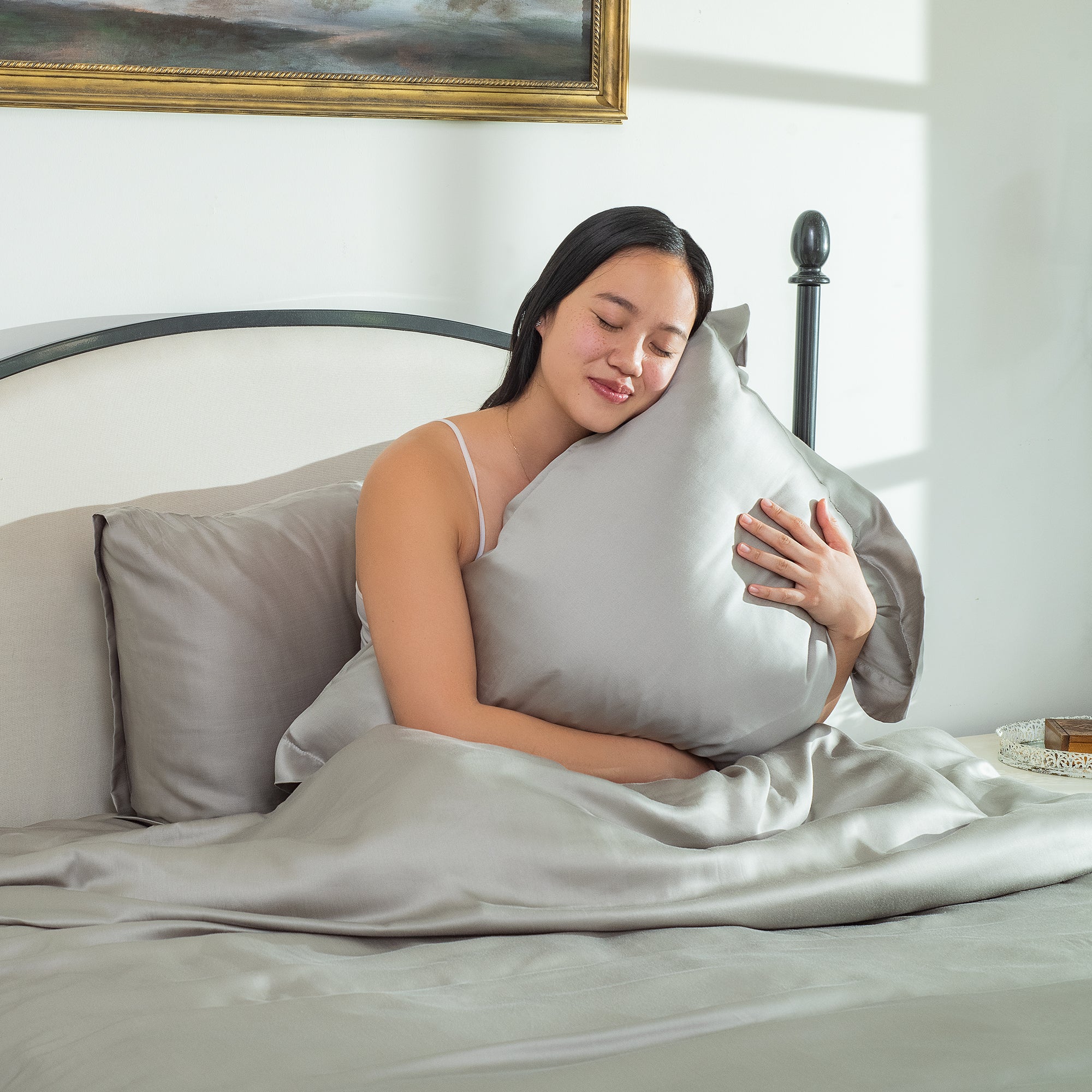A restful night often depends on the layer closest to you. Too hot, and you kick covers off. Too cold, and you curl up and wake stiff. Wool comforters solve both problems by regulating heat and humidity in real time.
In this guide, you will learn how wool works, what to look for in the best wool comforter, and how to pick an all-season wool comforter that suits hot and cold sleepers alike.
Why Choose a Wool Comforter?
Before we compare features, these four reasons will help you to understand why wool is different from down or synthetic fills.

1. Natural Temperature Regulation
The crimped structure of wool traps tiny air pockets for insulation, while the fibers move moisture vapor away from your skin. You feel warm without feeling stuffy.
2. Moisture Management
Wool can absorb and release moisture vapor, which helps reduce clamminess and night sweats compared with many synthetics.
3. Generally Allergy-Friendly
Clean, well-prepared wool is naturally resistant to common bedding pests when kept dry. Many allergy-prone households find it comfortable. If you have a known sensitivity to wool or lanolin, check with your healthcare provider.
4. Renewable and Durable
Wool is a renewable fiber that can last for years when cared for well. A protective duvet cover and regular airing keep it in shape.
6 Features To Look For in the Best Wool Comforter
Use these quick checks to separate a good wool comforter from a great one.

1. Fill Quality
Look for 100 percent wool or certified options that specify fiber grade. Merino is known for fine, soft fibers. Recycled wool can be warm but may feel firmer.
2. Shell Fabric
Choose breathable cotton or organic cotton. A smooth cotton sateen feels softer. A tighter percale can feel crisper and help contain fine fibers.
3. Weight Choices
Light, medium, and winter weights cover most climates. Many sleepers choose light or medium for year-round use, then layer a blanket in deep winter if needed.
4. Quilting Pattern
Box or channel quilting keeps wool evenly distributed so warmth feels consistent across the surface.
5. Secure Construction
Taped edges, strong stitching, and corner loops help the comforter stay aligned inside a duvet cover.
6. Clear Standards
Look for fabric safety testing and responsible sourcing. Examples include OEKO-TEX Standard 100 for textiles and the Responsible Wool Standard for wool supply chains.
The Best Comforter for All Seasons: Why Wool is The Top Choice?
If you want one comforter for the whole year, wool belongs on your shortlist.

● In warmer months, wool moves moisture away so heat does not build up.
● In cooler months, the same fiber traps enough air to keep you cozy without a heavy stack of layers.
● In mild climates, a medium-weight can be the only layer you need most of the year.
Pro tip: If your seasons are extreme, use a light or medium wool comforter and keep a breathable blanket nearby for the coldest nights.
All-Season Wool Comforter: Who Does It Suit?
An all-season build works well for households that value simplicity and consistent comfort.
● Couples With Different Temperatures
Wool adapts to the humidity near each sleeper. Many partners find fewer hot-cold disagreements.
● Small Homes or Limited Storage
One comforter that spans most of the year means fewer bulky items to store.
● Busy Routines
Wool stays fresh with airing and a protective duvet cover. Less frequent washing saves time.

Wool Comforter for Hot Sleepers
If you sleep warm, a well-built wool comforter can keep you comfortable without cold spots.
● Choose a Lighter Weight
Start with a light or medium fill. Pair with a breathable cotton duvet cover.
● Mind the Shell
A natural cotton shell helps moisture vapor pass through. Avoid tightly laminated shells that trap humidity.
● Layer With Intention
Keep the sheet and cover lightweight. Reduce heavy knit throws in warmer months.
Wool Comforter for Cold Sleepers
If you run cool, you can enjoy warmth without the bulk of heavy synthetics.
● Pick Medium or Winter Weight
The crimped fiber traps steady warmth that feels even from edge to edge.
● Use a Warm Cover
A cotton sateen or brushed cotton cover can feel cozier to the touch.
● Add a Top Blanket When Needed
On very cold nights, a breathable wool or cotton blanket on top adds a small boost without trapping excess humidity.
How to Choose the Right Wool Weight and Size?
A few fit details make a big difference in nightly comfort.

● Match Weight to Climate and Pajamas
Warmer homes, lighter sleepwear, and warm sleepers usually choose light or medium. Cooler homes or cold sleepers often pick medium or winter.
● Check Dimensions Against Your Duvet Cover
A close fit reduces shifting. Corner loops and ties keep everything aligned.
● Consider Mattress Height
Tall pillow-top mattresses benefit from a slightly wider comforter, so coverage looks balanced.
5 Care and Cleaning Pro Tips for Wool Comforters
Wool stays fresh with simple routines. Treat it gently, and it will provide you with years of comfort.
1. Air Regularly
Hang or lay the comforter flat in fresh air for an hour to release moisture and refresh the loft.
2. Use a Protective Duvet Cover
A washable cover takes the brunt of weekly care and limits soil on the comforter itself.
3. Spot Clean When Needed

Blot with cool water and a small amount of mild soap. Avoid soaking the fill.
4. Avoid Frequent Washing
Many wool comforters are spot-clean only. If cleaning is required, follow the label and consider a professional cleaner who understands wool.
5. Dry Fully
If the comforter becomes damp, allow it to dry completely with good airflow before storing or remaking the bed.
Quick Comparison: Wool vs Down vs Synthetic
Use this snapshot to decide if wool is the right primary layer for you.
Wool
Even warmth, strong moisture control, breathable, stable loft, simple care by airing.
Down
High warmth for weight, very compressible, can feel clammy to warm sleepers, and needs careful cleaning.
Synthetic
Budget-friendly, easy to machine wash for many styles, less breathable, may run hot or feel humid for some sleepers.
Sleep Better With Natural, Breathable Layers With Delara
If you want one comforter that adapts to every season, choose the Delara 3 in 1 Organic Wool Comforter.
You can use the lighter 200 GSM insert for summer, the 300 GSM insert for cooler months, or snap them together to create a 500 GSM winter build, so warmth fits your home and sleep style.
The fill is 100% Merino wool with a breathable organic cotton shell, backed by organic and safety certifications many shoppers look for, which helps hot sleepers stay dry and cold sleepers feel evenly warm. See the sizes and details, then set your bed up once for year-round comfort.









Leave a comment